
Robert Walker, side chair, King George County, Virginia, 1746. Mahogany with beech. H. 38 7/8", W. 21 3/8", D. 17 1/4". (Courtesy, Colonial Williamsburg Foundation; photo, Hans Lorenz.)
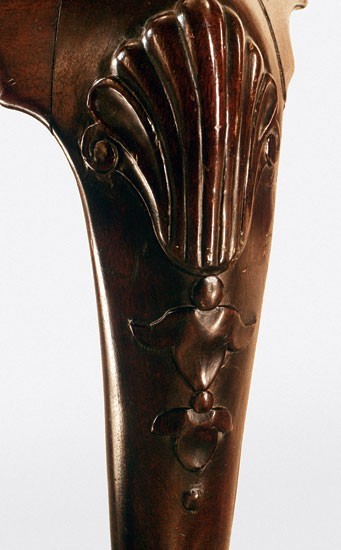
Detail of the knee carving on the side chair illustrated in fig. 1.
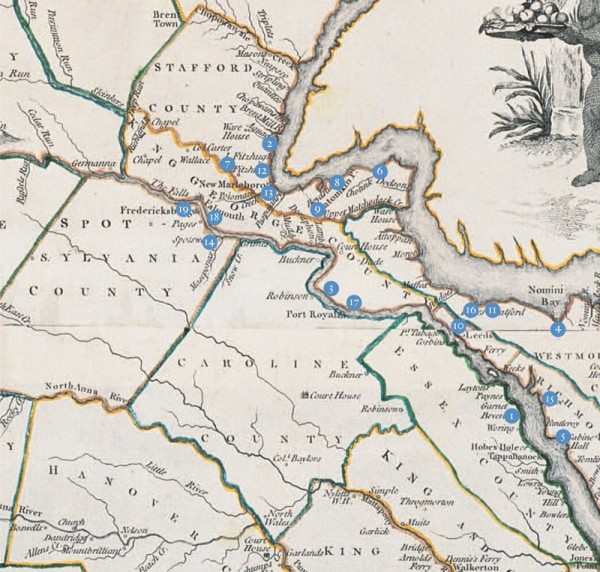
Detail of the Rappahannock River valley in John Henry, cartographer, Thomas Jefferys, engraver, A New and Accurate Map of Virginia, Wherein most of the Counties are laid down from Actual Surveys (London, 1770). Engraving and watercolor on paper. (Courtesy, Colonial Williamsburg Foundation; photo, Hans Lorenz.) This map highlights and identifies the sites associated with Robert and William Walker.
1. Beverley–Blandfield
2. Brent–Richland
3. Carter–Cleve
4. Carter–Nomini Hall
5. Carter–Sabine Hall
6. Fitzhugh–Bedford
7. Fitzhugh–Boscobel
8. Fitzhugh–Eagle’s Nest
9. Fitzhugh, Lewis-Marmion
10. Jett–Walnut Hill
11. Lee–Stratford Hall
12. Lee–Bellview
13. Mercer–Marlborough
14. Spotswood–Newpost
15. Tayloe–Mt. Airy
16. Thornton–Fall Hill
17. Turner–Walsingham
18. Washington–Ferry Farm
19. Washington–Wakefield
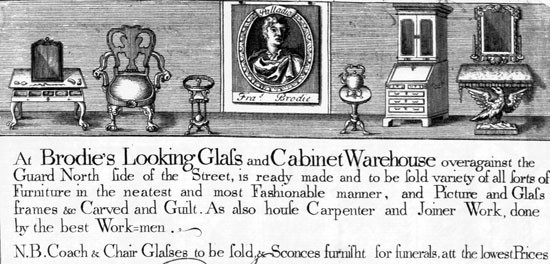
Billhead used by Francis Brodie, Edinburgh, Scotland, 1739. Engraving on paper. (By permission of the trustees of the Goodwood Collection.)
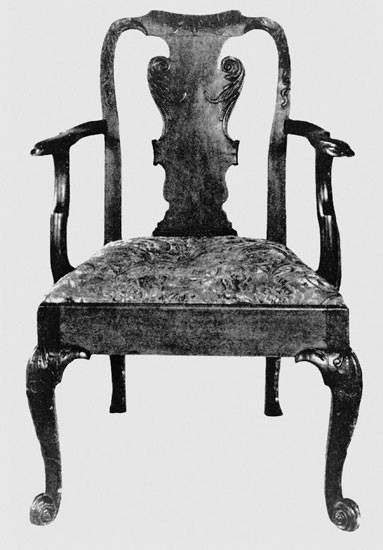
Armchair attributed to Robert Walker, King George County, Virginia, 1735–1745. Walnut. H. 40", W. 25". (National Art Galleries, XVII and XVIII Century American Furniture, New York, December 3–5, 1931, lot 483.)
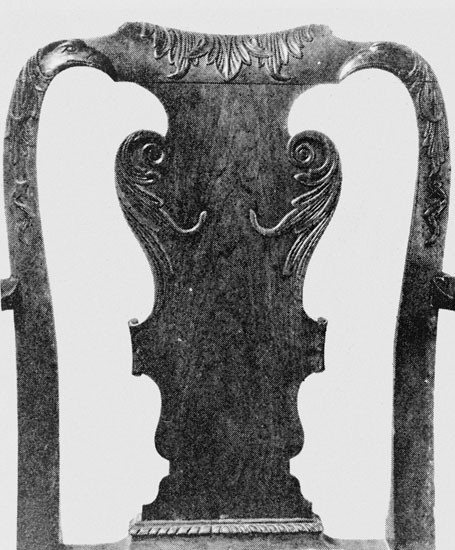
Detail of the carved crest and splat on the armchair illustrated in fig. 5.
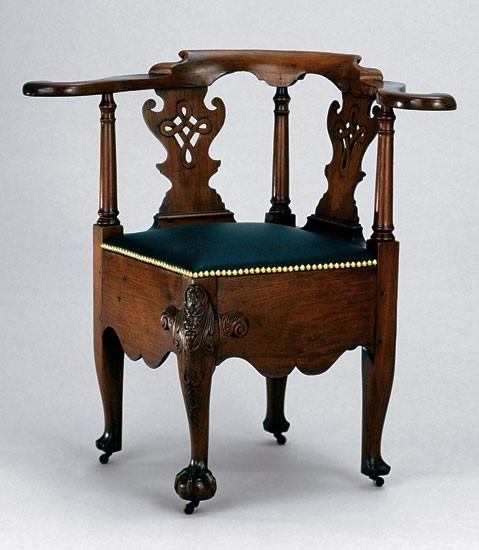
Corner chair attributed to Robert Walker, King George County, Virginia, 1745–1755. Walnut with beech. H. 34", W. 23", D. 26". (Courtesy, Colonial Williamsburg Foundation; photo, Hans Lorenz.)
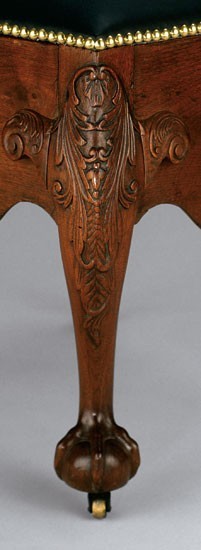
Detail of the carving on the front leg of the corner chair illustrated in fig. 7.
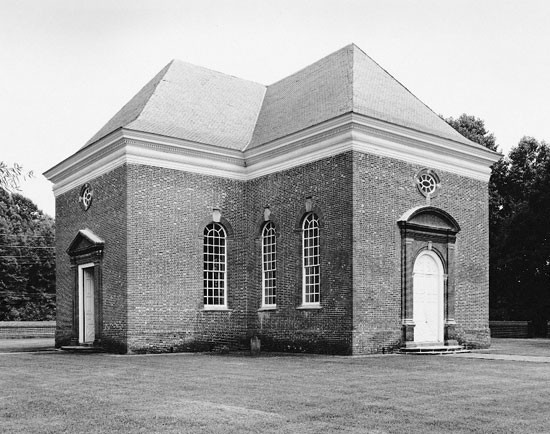
Christ Church, Lancaster County, Virginia, 1728–1735. (Courtesy, Museum of Early Southern Decorative Arts, Old Salem Museums & Gardens.)
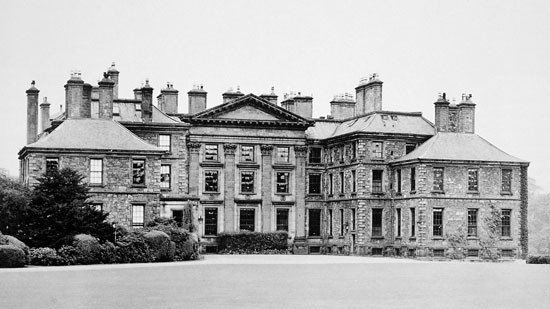
Dalkeith Palace, Midlothian, Scotland, 1702–1711. (Country Life, October 7, 1911).

Stratford Hall, Westmoreland County, Virginia, ca. 1740. (Courtesy, Stratford Hall Plantation, Robert E. Lee Memorial Association, Stratford, Virginia; photo, James R. Dunlop.)
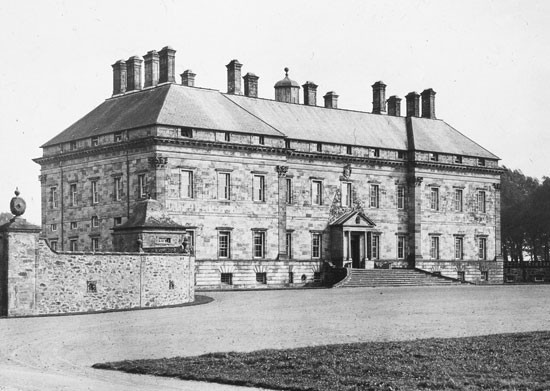
Kinross House, Kinross-shire, Scotland, 1685–1693. (Country Life, July 13, 1912).
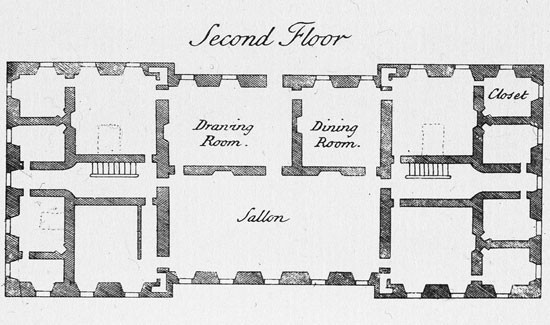
Second-floor plan of Kinross House illustrated on pl. 61 of William Adam, Vitruvius Scoticus (1812).
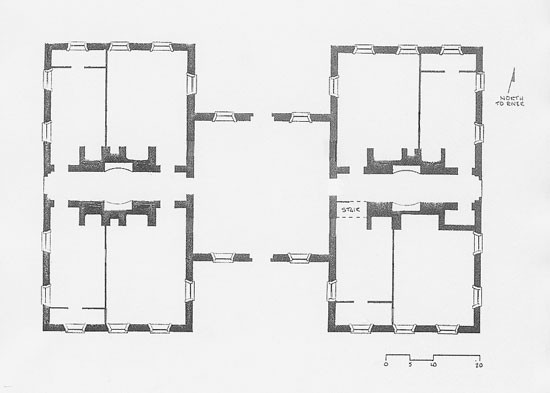
Second-floor plan of Stratford Hall. (Courtesy, Stratford Hall Plantation, Robert E. Lee Memorial Association, Stratford, Virginia.)
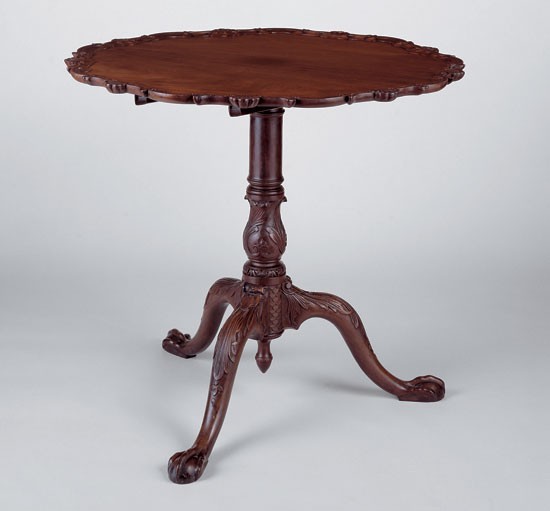
Tea table attributed to Robert Walker, King George County, Virginia, 1740–1750. Mahogany. H. 28 3/4", Diam. of top: 32 13/16". (Stratford Hall Plantation, Robert E. Lee Memorial Association, Stratford, Virginia; photo, Gavin Ashworth.)
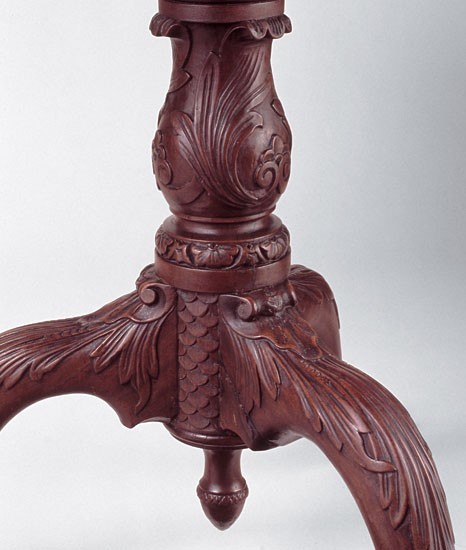
Detail of the carving on the pillar and legs of the tea table illustrated in fig. 15. (Photo, Gavin Ashworth.)
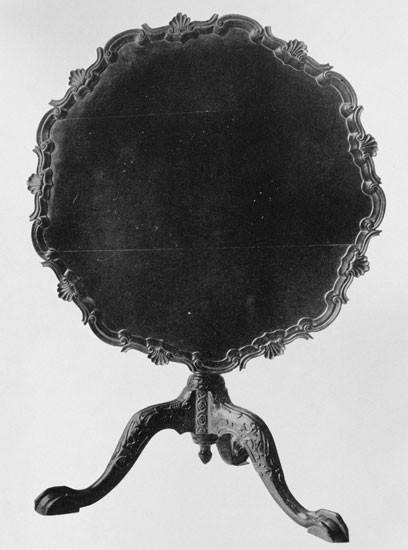
Tea table attributed to Robert Walker, King George County, Virginia, 1745–1755. Woods and dimensions unrecorded. (Edward Wenham, The Collector’s Guide to Furniture Design [New York: Collectors Press, 1928], p. 216.) The top is virtually identical to that on the Lee family table illustrated in fig. 15. The guilloche-and-flower motif between the legs of the table shown in fig. 17 is common in eighteenth-century architecture, but less so in furniture of the period.
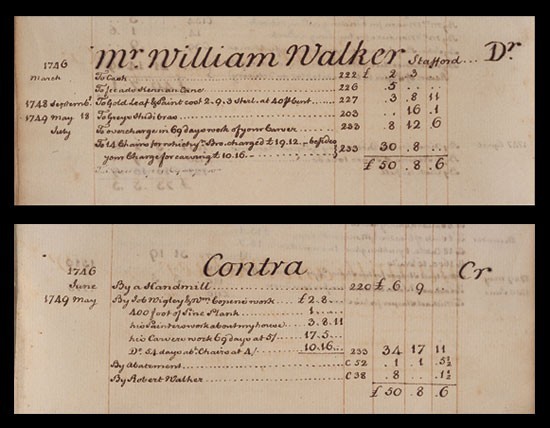
Account of William Walker with John Mercer, John Mercer Account Book, 1741–1750, fol. 36. (Courtesy, Mercer Museum, Bucks County Historical Society.) This account records the May 1749 charges for carving the Mercer-Walker chair illustrated in fig. 19 and Mercer’s subsequent sale of the set of fourteen chairs back to William Walker in July 1749.
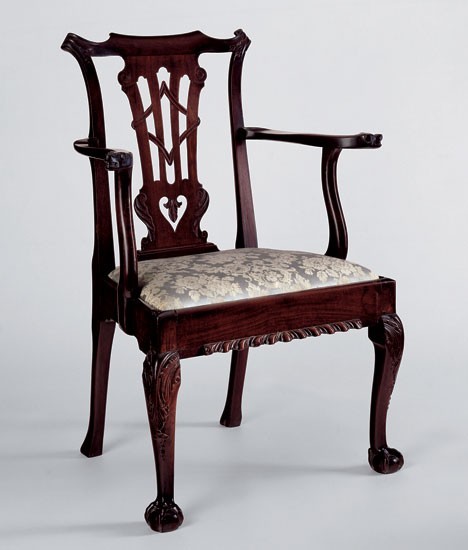
Robert Walker, armchair, King George County, Virginia, 1749. Mahogany. H. 38 1/2", W. 28 1/2", D. 18". (Courtesy, Mary Washington House, Association for the Preservation of Virginia Antiquities; photo, Gavin Ashworth).
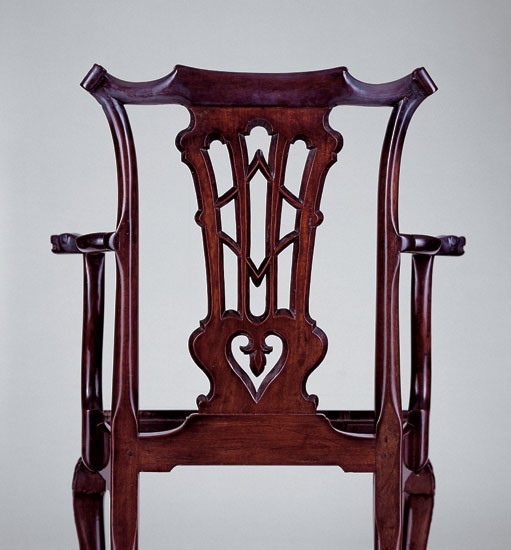
Detail of the back of the chair illustrated in fig. 19. (Photo, Gavin Ashworth.)
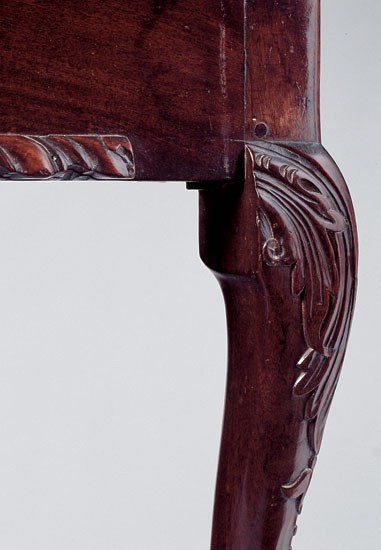
Detail of the chair illustrated in fig. 19, showing the attachment of the gadrooned molding and (missing) knee blocks. (Photo, Gavin Ashworth.)
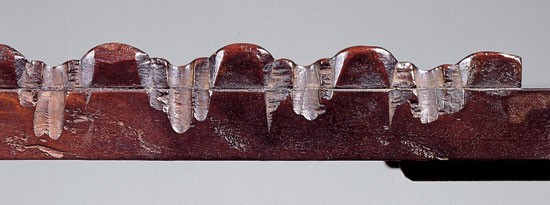
Detail of the chair illustrated in fig. 19, showing the undercut gadrooned molding. (Photo, Gavin Ashworth.)
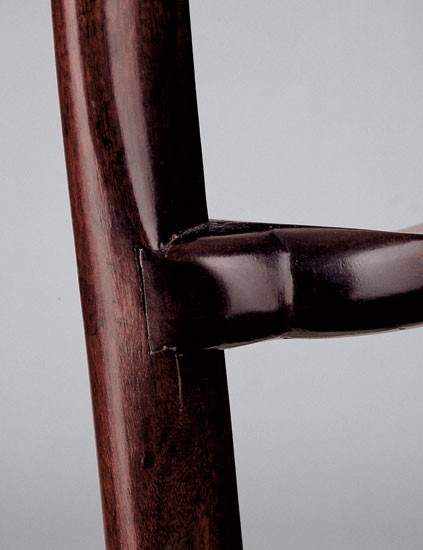
Detail of the chair illustrated in fig. 19, showing the attachment of the arms to the stiles. (Photo, Gavin Ashworth.)
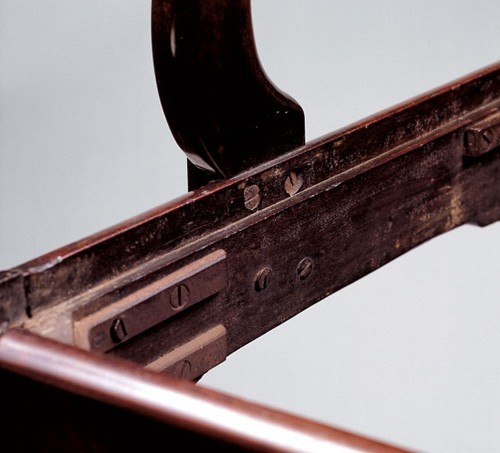
Detail of the chair illustrated in fig. 19, showing the attachment of the arms to the side rails. (Photo, Gavin Ashworth.)
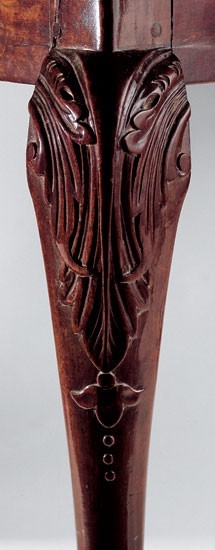
Detail of the knee carving on the chair illustrated in fig. 19. (Photo, Gavin Ashworth).
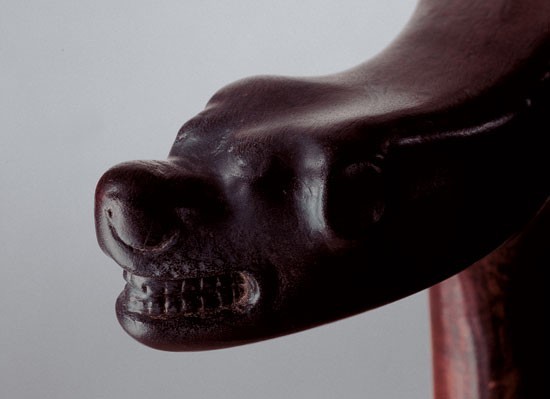
Detail of the left arm terminal of the chair illustrated in fig. 19. (Photo, Gavin Ashworth.)
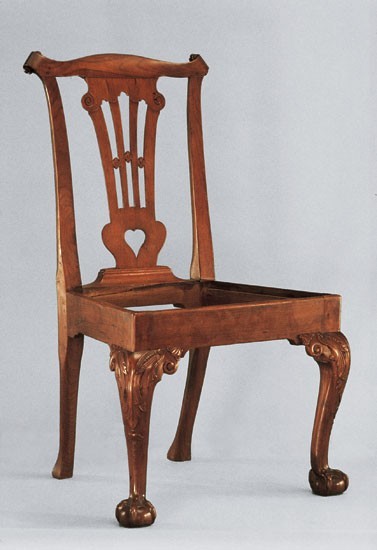
Side chair attributed to Robert Walker, King George County, Virginia, 1745–1755. Walnut with oak and yellow pine. H. 37 7/8", W. 22 3/4", D. 20 3/4". (Colonial Williamsburg Foundation; photo, Hans Lorenz.)

Patrick Strahan, side chair, London, 1735–1740. Walnut. Dimensions not recorded. (Christopher Gilbert, Pictorial Dictionary of Marked London Furniture, 1740–1840 [Leeds: Furniture History Society, 1996], p. 442.) Like many of the chairs documented and attributed to Robert Walker, this example has a scroll in the center of the crest rail, three lobate piercings in the splat, rounded and molded rear legs, shell and bellflower carving on the knees, and compressed claw-and-ball feet with prominent rear talons.
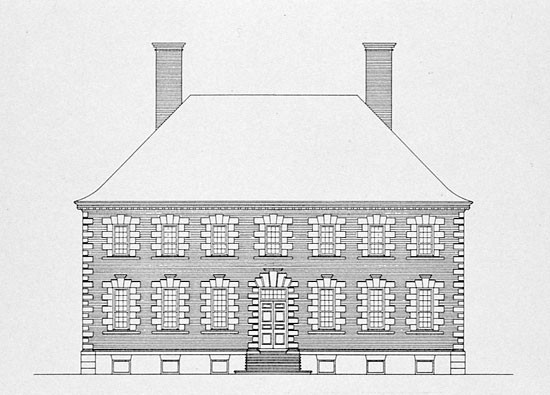
Cleve, King George County, Virginia, ca. 1740–1747
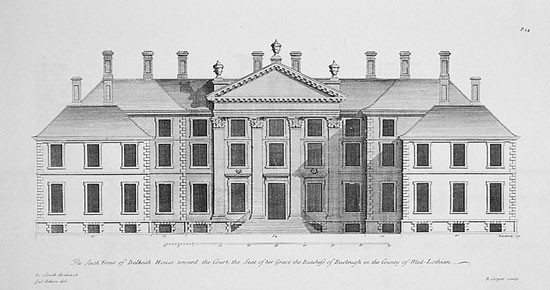
Detail of Dalkeith Palace illustrated on pl. 24 in William Adam, Vitruvius Scoticus (1812).
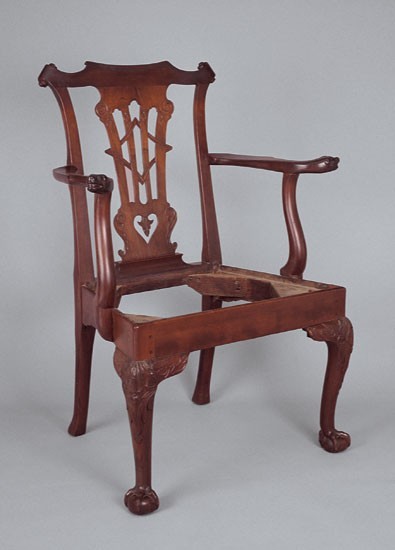
Armchair attributed to Robert Walker, King George County, Virginia, 1745–1750. Cherry with beech. H. 39 5/16", W. 24 5/8", D. 18 3/8". (Courtesy, Shirley Plantation, Charles City County, Virginia; photo, Hans Lorenz.)

Detail of the knee carving on the chair illustrated in fig. 31.
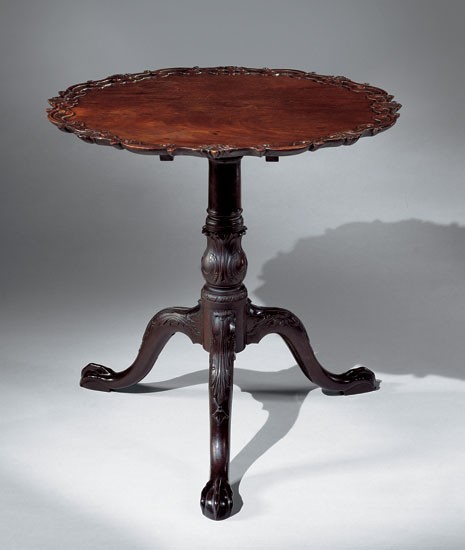
Tea table attributed to Robert Walker, King George County, Virginia, 1750–1760. Mahogany and cherry. H. 28 1/2", Diam. of top 30". (Collection of the Museum of Early Southern Decorative Arts, Old Salem Museums & Gardens, gift of Mr. and Mrs. John T. Warmath in memory of Mr. and Mrs. Henry Worsham Dew; photo, Wes Stewart.)
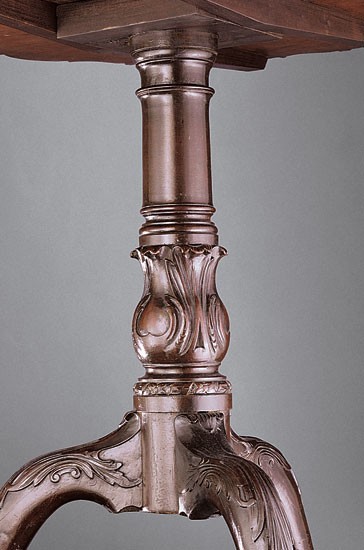
Detail of the carving on the pillar and legs of the tea table illustrated in fig. 33.
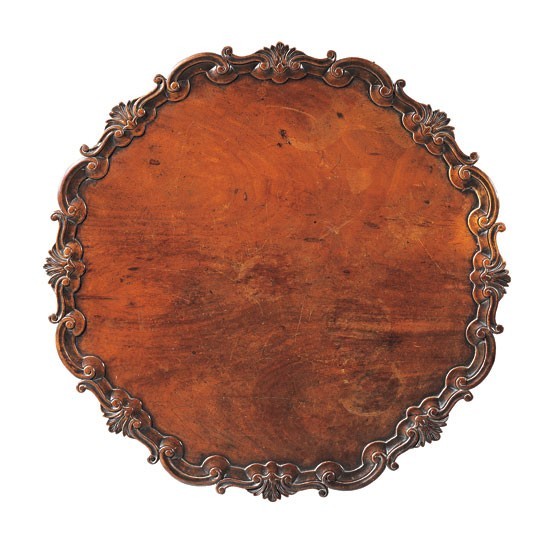
Detail of the top of the tea table illustrated in fig. 33.

Kettle stand attributed to Robert Walker, King George County, Virginia, 1750–1760. Mahogany. H. 31 3/4", Diam. of top: 21". (Private collection; photo, Gavin Ashworth.)
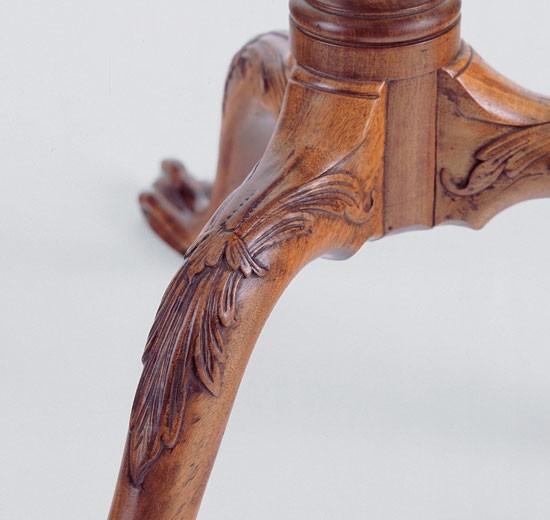
Detail of the carving on the legs of the stand illustrated in fig. 36. (Photo, Gavin Ashworth.) Like the tea table illustrated in fig. 33, this example originally had knee carving featuring a broad, flat leaf scrolling up and turning over where the top of each leg joins the pillar.

Detail of the top of the stand illustrated in fig. 36. (Photo, Gavin Ashworth.)
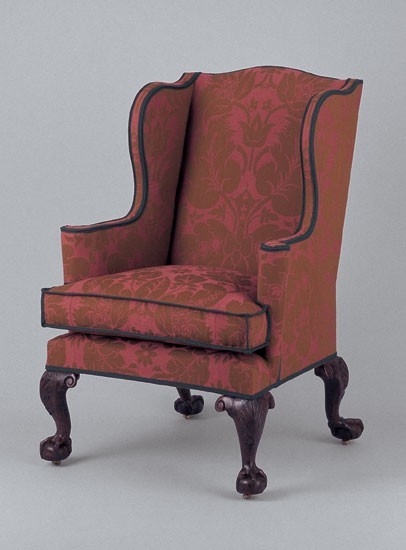
Easy chair attributed to Robert Walker, King George County, Virginia, 1745–1755. Mahogany with beech. H. 46", W. 32", D. 30 1/2". (Courtesy, George Washington’s Mount Vernon, Mount Vernon, Virginia; photo, Gavin Ashworth.) This is the only American easy chair with cabriole rear legs that end in claw-and-ball feet.
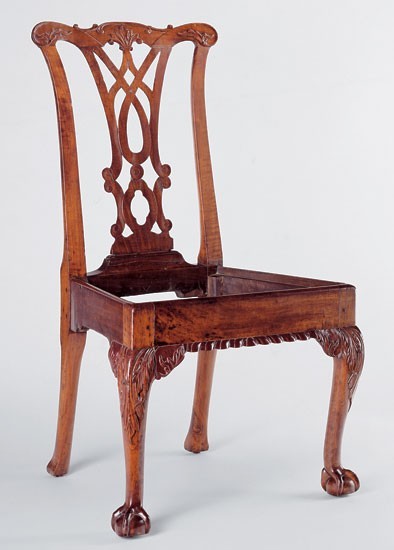
Side chair attributed to Robert Walker, King George County, Virginia, 1750–1760. Walnut with beech. H. 39", W. 22 5/8", D. 20 1/2". (Courtesy, George Washington’s Mount Vernon, Mount Vernon, Virginia; photo, Gavin Ashworth.)
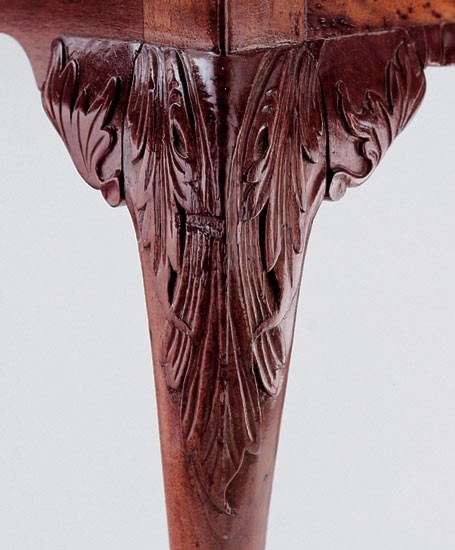
Detail of the knee carving on the chair illustrated in fig. 40. (Photo, Gavin Ashworth.)
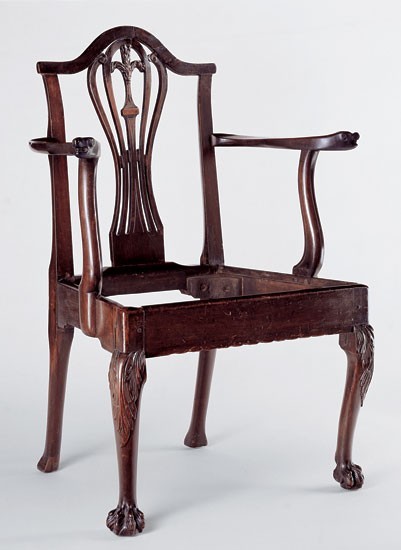
Armchair attributed to Robert Walker, King George County, Virginia, 1750–1760. H. 39 3/4", W. 24", D. 21". Mahogany. (Courtesy, George Washington’s Mount Vernon, Mount Vernon, Virginia; photo, Gavin Ashworth.) The crest rail and splat were replaced in the nineteenth century.
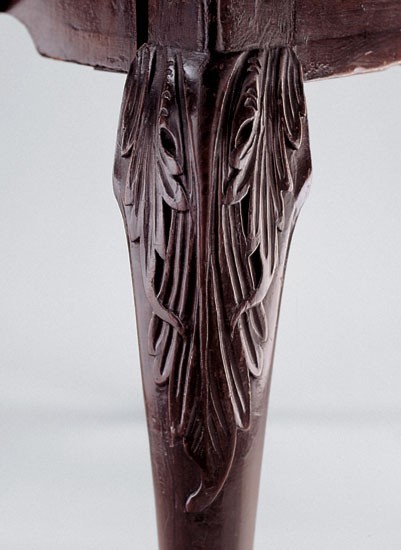
Detail of the knee carving on the chair illustrated in fig. 42. (Photo, Gavin Ashworth.)

Armchair attributed to Robert Walker, King George County, Virginia, 1750–1760. Walnut. H. 37 1/4", W. 22 5/16", D. 17 5/8". (Private collection; photo, Hans Lorenz.) Like other seating attributed to Walker’s shop, this chair has laminated triangular glue blocks at the corners of the seat frame, a splat with beveled rear edges and piercings related to those on earlier seating in the group, an arched rear rail that is integral with the shoe, and arms that are attached to the side rails with a coped joint and four screws and joined to the rear stiles with an exposed dovetail reinforced with a screw. The chair originally had a slip seat, but it was replaced with plank boards during the nineteenth century.
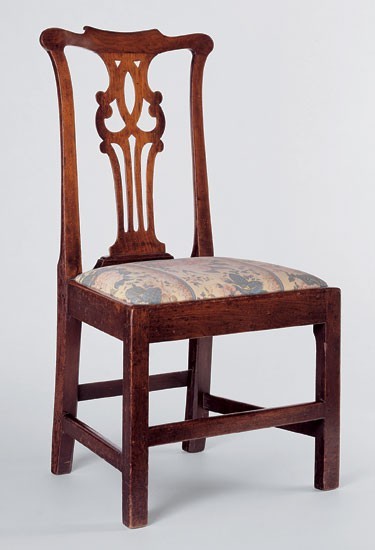
Side chair attributed to Robert Walker, King George County, Virginia, 1760–1775. Walnut with beech. H. 37 1/2", W. 22 5/8", D. 17". (Courtesy, George Washington’s Mount Vernon, Mount Vernon, Virginia; photo, Gavin Ashworth.) Two chairs from this set are at Mount Vernon and two are at Kenmore.
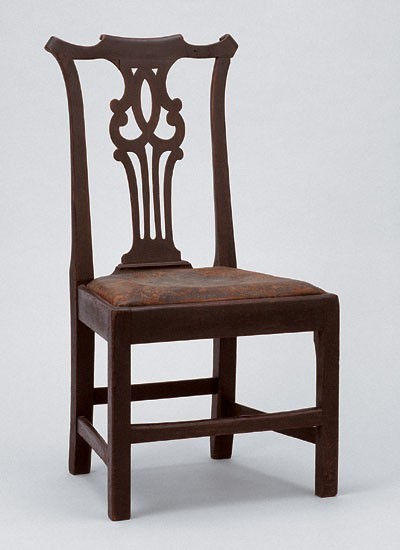
Side chair attributed to Robert Walker, King George County, Virginia, 1760–1775. Walnut with beech. H. 37 1/2", W. 22 1/2", D. 17". (Colonial Williamsburg Foundation; photo, Hans Lorenz.) This chair retains its original leather covering and linen under upholstery.
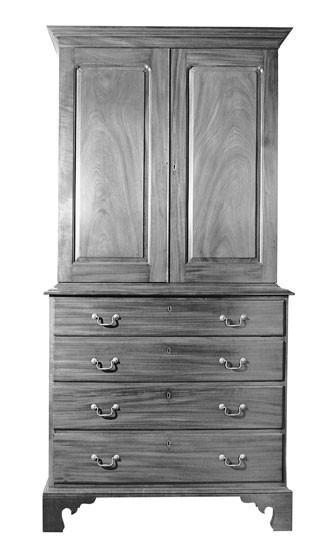
Clothespress attributed to Robert Walker, King George County, Virginia, 1750–1760. Walnut with yellow pine. H. 84 1/2", W. 42 1/2", D. 23 1/2". (Courtesy, Museum of Early Southern Decorative Arts, Old Salem Museums & Gardens.) The feet are incorrect replacements.
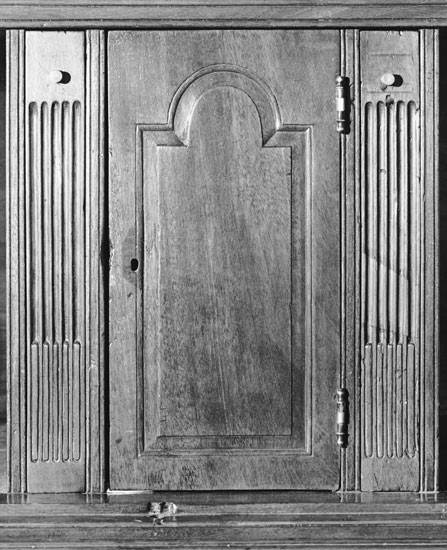
Detail of the interior of the press illustrated in fig. 47.
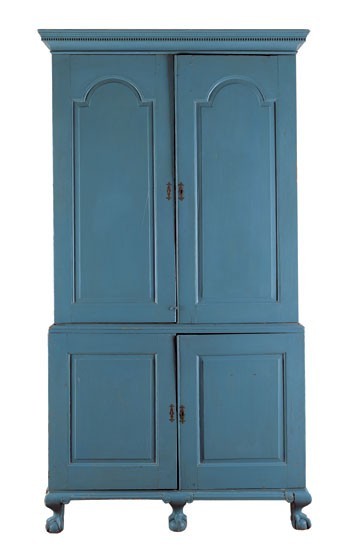
Desk-and-bookcase attributed to Robert Walker, King George County, Virginia, 1750–1760. Yellow pine; remnants of original blue paint under later blue paint. H. 91 1/2", W. 48 5/8", D. 16 3/4". (Courtesy, George Washington’s Mount Vernon, Mount Vernon, Virginia; photo, Gavin Ashworth.)
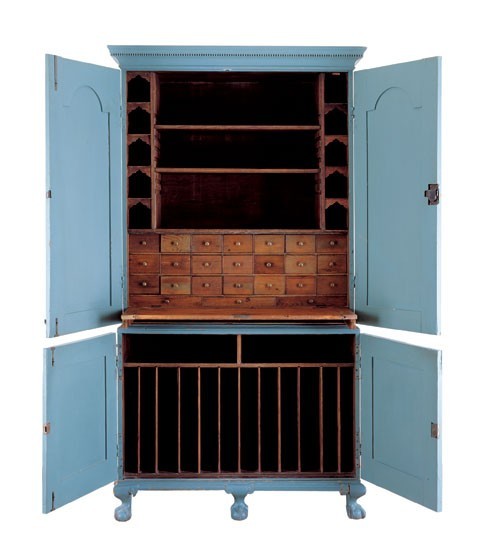
Detail of the interior of the desk-and bookcase illustrated in fig. 49. (Photo, Gavin Ashworth.)
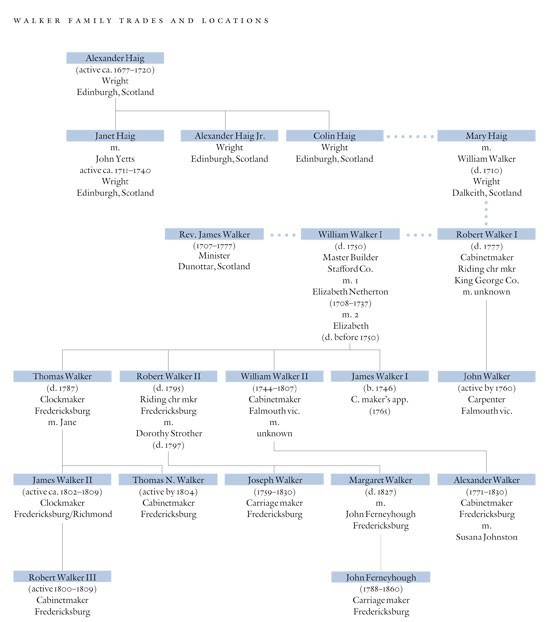
Chart of Walker family members and their respective trades, illustrating four generations of furniture-related artisans in the Rappahannock River valley and their likely Scottish ancestry.
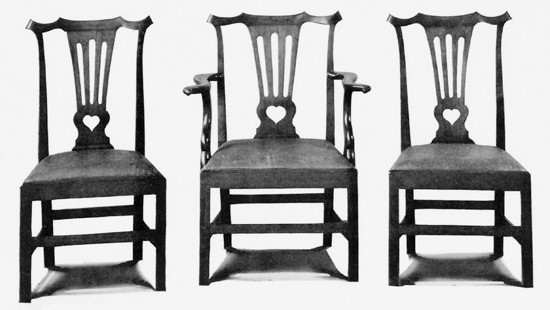
“The Thomas Lord Fairfax Chairs” attributed to William Walker Jr., Stafford County, Virginia, 1771–1772. Woods and dimensions not recorded. (Samuel T. Freeman, Executor’s Sale, Antique and Modern Furniture, Collected by the Late George W. Childs, Philadelphia, November 20–23, 1928, lot 291.)
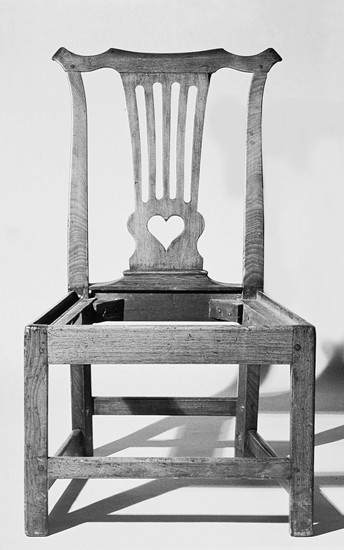
Robert Cockburn, side chair, Orange County, Virginia, 1773. Walnut. H. 34", W. 20 1/4", D. 17". (Courtesy, Greensboro Historical Museum, gift of Mrs. Whitfield Cobb.) The crests and splats of Madison’s chairs identify them as products of the Walker shop tradition, and their construction features separate shoes and rear rails—a trait differentiating William Jr.’s work from that of his uncle.
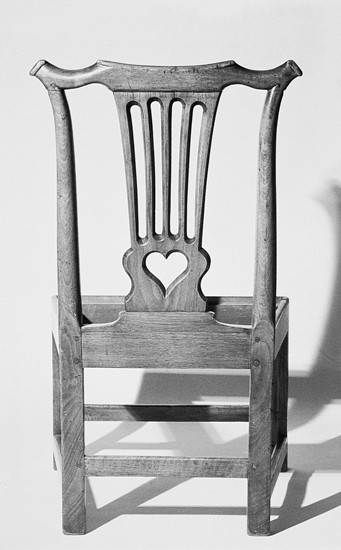
Detail of the back of the side chair illustrated in fig. 53.
